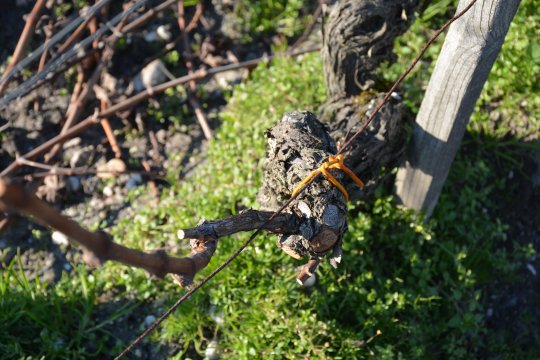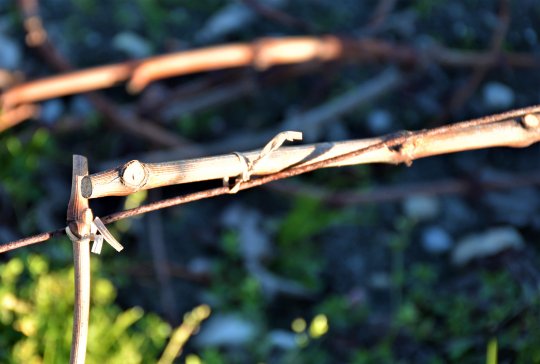Tying
The tying of the vines or acanage involves tying the base of the vine to a stake or to the wire in order to keep the vine upright. The stake also protects vines from machinery during ploughing.
The base of the vines is not systematically attached in this way. It is often carried out on an ad-hoc basis to protect those that need it.



